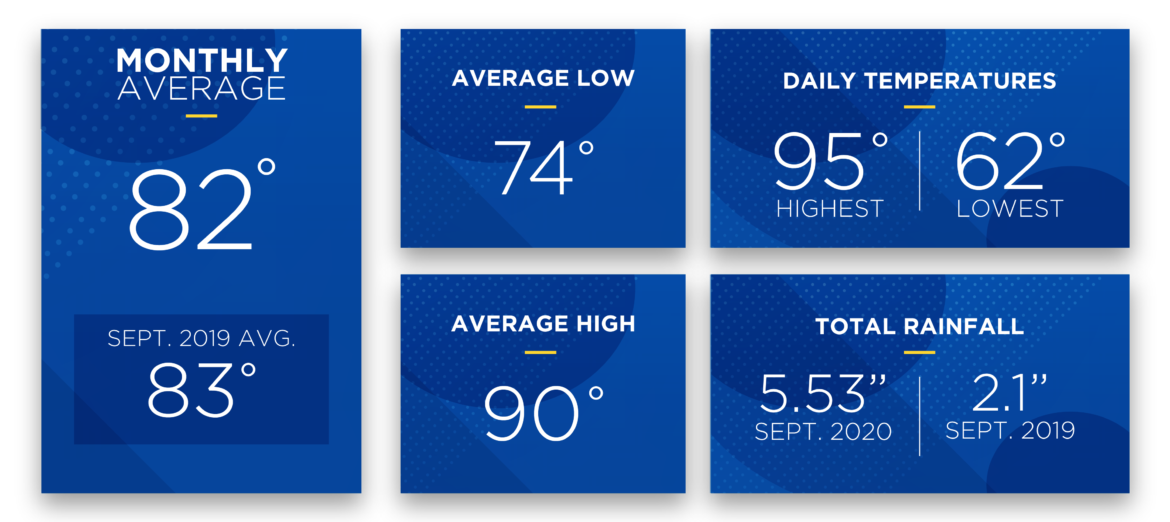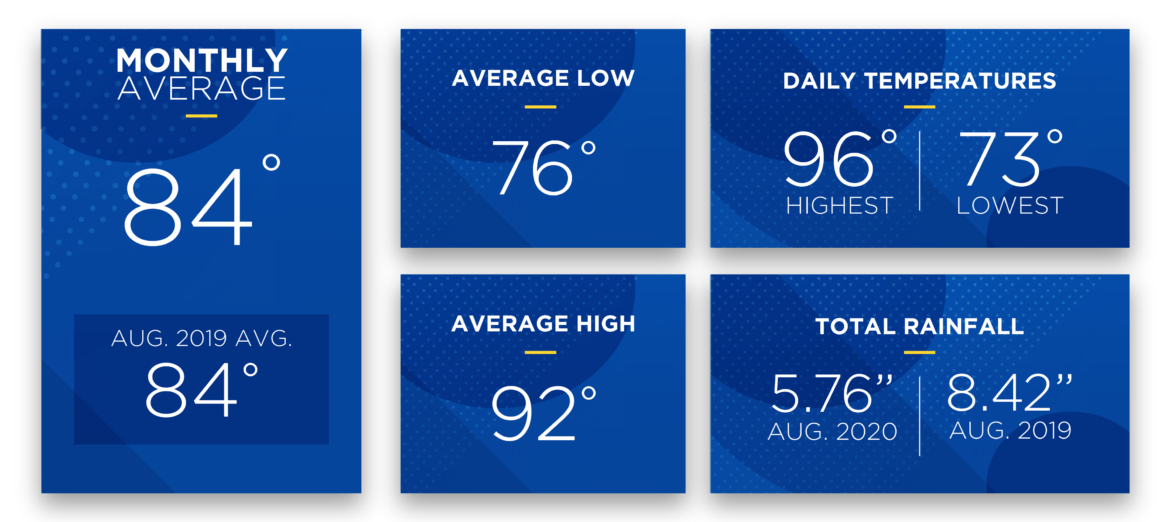Sunshine State Stats September 2020
The hot summer temperatures continued through most of September 2020 with 17 days of the month reaching over 90 degrees. The average high was 90 degrees and the average low was 74. The highest recorded temperature of the month was 95 while the lowest recorded was 62 degrees. The average temperature was 82 degrees, a little bit lower than the average temperature of 83.4 degrees in September 2019.

A late-September cold snap teased Central Floridians that fall-like temperatures are on the way. The last day of the month, the high temperature was a lovely 79 degrees with a low of 62 degrees. Rainfall was higher at 5.53 inches compared to only 2.1 inches last September.
The tropics were especially active with ten named storms churning in the Atlantic and the Gulf of Mexico during September. Thus far in Central Florida, we are largely unaffected by tropical storms or hurricanes this season. The 2020 Atlantic hurricane season is still an active one. Keep your hurricane supplies stocked and ready in case a late-season storm heads our way.
October forecast:
The October forecast shows slightly cooler weather for Central Florida with highs in the low to mid 80s. Early morning and evening temperatures will be in the mid-70s to low-60s. It looks like we may have a rainy October that will usher in a cooler November.
Before winter temperatures arrive, consider scheduling an HVAC tune-up. Regular maintenance helps your unit run more efficiently and can diagnose small problems before they become bigger problems.
To check historical usage, log into SmartHub to view past bills and consumption charts. If your usage is high, SECO offers several energy-efficiency tools to help you identify energy wasters. Take the Home Energy Assessment to receive a detailed email tailored to your home’s features and lifestyle. The energy-saving advice will provide low-cost ways to decrease your usage – and your electric bill.
To easily calculate how much energy your appliances, lighting, electronic devices, and other energy-using items in your home consume, use the Energy Estimator.





